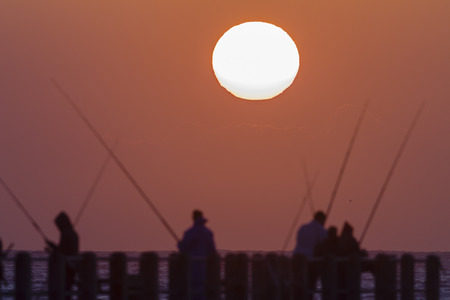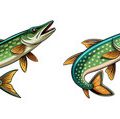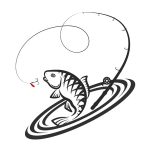1. Choosing the Right Kayak and Gear
If youre planning to target redfish and snook from a kayak, having the right setup can make or break your day on the water. Lets break down the essential gear, including the best kayaks, paddles, storage options, and accessories specifically suited for chasing these popular inshore species.
Best Types of Kayaks for Redfish and Snook
When it comes to kayak fishing, stability and maneuverability are key—especially when youre stalking redfish in shallow flats or casting into mangroves for snook. Sit-on-top kayaks are the top choice for most anglers because they offer better visibility, easier access to gear, and are generally more stable for standing casts.
| Kayak Type | Pros | Cons |
|---|---|---|
| Sit-on-Top Fishing Kayak | Great stability, easy access to gear, self-draining | Heavier, may be slower to paddle |
| Pedal Drive Kayak | Hands-free movement, ideal for sight fishing | More expensive, heavier to transport |
| Inflatable Fishing Kayak | Portable and lightweight | Less durable in oyster beds or rocky areas |
Paddles and Pedal Systems
A quality paddle is just as important as your kayak. Look for lightweight materials like fiberglass or carbon fiber if youll be covering long distances. If you prefer hands-free operation while fishing (which helps when working a lure or fighting a fish), consider investing in a pedal-drive system. Just remember: pedals work best in deeper water with minimal vegetation.
Storage Options and Tackle Management
Fishing from a kayak means space is limited, so smart storage matters. Use waterproof crates or tackle bags that fit neatly behind your seat. Many fishing kayaks come with built-in rod holders, dry hatches, and bungee systems to keep things organized.
Recommended Storage Add-ons:
- Milk Crate with Rod Holders: A simple and effective way to store gear and extra rods.
- Tackle Trays: Stackable trays help organize lures by type or target species.
- Dry Bags: Essential for keeping electronics, keys, and your phone safe from splashes.
Must-Have Accessories for Targeting Redfish and Snook
Your success on the water often depends on having the right tools within reach. Here are some key accessories tailored for targeting redfish and snook:
| Accessory | Purpose |
|---|---|
| Anchor Pole or Stake-Out Stick | Keeps your kayak stationary in shallow water while casting at tailing reds or lurking snook. |
| Paddle Leash | Prevents losing your paddle overboard when fighting fish. |
| Fish Finder with GPS | Helps locate structure and track hot spots along mangrove edges or grass flats. |
| Tethered Landing Net | Makes landing fish easier without tipping your kayak. |
Pro Tip:
If youre regularly fishing tidal creeks or skinny waters where redfish cruise during low tide, look for a kayak with a flat hull design. Itll allow you to float in just a few inches of water—perfect for sneaking up on spooky fish!
The right combination of kayak features and accessories will set you up for success when targeting redfish and snook. Focus on comfort, efficiency, and organization so you can spend less time fumbling with gear—and more time catching fish.
2. Best Locations and Seasonal Patterns
If youre planning a kayak fishing trip for redfish and snook, choosing the right location and timing it with the seasons can make all the difference. These species are popular along the U.S. coastlines, especially in the Southeast and Gulf regions. Here’s a guide to some of the best places to launch your kayak and when to go for optimal action.
Top Kayak Fishing Spots for Redfish and Snook
| Location | State | Target Species | Why It’s Great |
|---|---|---|---|
| Mosquito Lagoon | Florida | Redfish | Shallow flats perfect for sight casting from a kayak |
| Tampa Bay | Florida | Snook & Redfish | Diverse mangrove shorelines and easy kayak access points |
| Laguna Madre | Texas | Redfish | Vast shallow waters ideal for kayakers targeting big reds |
| Everglades National Park | Florida | Snook & Redfish | A remote paradise with rich fish habitat and calm backwaters |
| Cape Lookout National Seashore | North Carolina | Redfish | Seasonal red drum runs near surf zones accessible by kayak |
Seasonal Patterns That Affect Redfish and Snook Behavior
Spring (March – May)
This is a great time to target both species as water temperatures begin to rise. Snook move out of their winter hiding spots, while redfish become more active on the flats. Look for them near oyster bars, grass beds, and mangroves.
Summer (June – August)
The warmest months bring snook into passes, inlets, and beach areas where they spawn. Early mornings or late evenings are best due to high temps. Redfish are often found tailing in skinny water during early morning hours.
Fall (September – November)
This is prime time for redfish, especially during their annual bull red runs. You’ll find them schooling in deeper channels or cruising shoreline shallows. Snook feed aggressively before winter, making them easier to catch around mangroves and docks.
Winter (December – February)
Redfish remain active in deeper holes or mud flats that retain warmth. Snook tend to slow down and retreat to warmer backcountry waters or residential canals. Focus on sunny days when water temps slightly rise.
Kayak Launch Tips for Each Region
- Mosquito Lagoon: Try launching from Haulover Canal or Beacon 42 ramp for quick access to productive flats.
- Tampa Bay: Picnic Island Park or Fort De Soto Park provide easy entry points with nearby structure-rich areas.
- Laguna Madre: Use Bird Island Basin or South Padre Island launches for sheltered paddling routes.
- Everglades: Flamingo Marina gives access to both fresh and saltwater zones with plenty of fishy backwaters.
- Cape Lookout: Launch at Harkers Island or Shell Point; be prepared for changing tides and coastal winds.
Selecting the right spot and understanding seasonal behavior helps you stay one paddle stroke ahead of the fish. Whether youre chasing tailing reds on a summer flat or stalking snook in shaded mangroves, knowing where—and when—to go is key to a successful kayak fishing adventure.
![]()
3. Tactics and Techniques for Catching Redfish and Snook
When it comes to kayak fishing for redfish and snook, knowing the right tactics can make all the difference. These fish are popular targets in inshore waters, especially along the Gulf Coast and southeastern U.S. states like Florida, Louisiana, and Texas. Below are some proven techniques that help anglers successfully locate and catch these species from a kayak.
Sight Casting
Sight casting is one of the most exciting ways to target redfish and snook. From your kayak, you can quietly glide across shallow flats where these fish often feed. Look for signs like nervous water, baitfish jumping, or even the fish themselves tailing or cruising near the surface. A good pair of polarized sunglasses is essential to reduce glare and help spot movement beneath the water.
Tips for Successful Sight Casting:
- Keep casts short and accurate—long casts can spook fish in shallow water.
- Use soft plastic lures or weedless rigged baits to avoid snags in grassy areas.
- Approach slowly and use your paddle or push pole instead of a noisy pedal drive when close to fish.
Using Live or Artificial Bait
Both live and artificial baits work well for redfish and snook. The choice often depends on local conditions, personal preference, and bait availability.
| Bait Type | Examples | Best Use |
|---|---|---|
| Live Bait | Live shrimp, pinfish, finger mullet | Great when targeting pressured fish or during slower bite windows |
| Artificial Lures | Soft plastics, topwater plugs, jerkbaits | Ideal for covering more water quickly and triggering reaction bites |
Stealth Approaches from a Kayak
Kyak fishing gives you a big advantage when it comes to stealth. Unlike motorboats, kayaks allow you to approach quietly without spooking nearby fish. Here’s how to stay stealthy:
- Avoid sudden movements or banging gear inside the kayak.
- Paddle gently and use the wind to drift into position when possible.
- If standing up while sight fishing, move slowly and stay balanced to avoid making splashes.
Reading the Water
Understanding how to read the water helps you find where redfish and snook are likely to be feeding or hiding. Look for structures like oyster bars, mangrove shorelines, grass flats, drop-offs, and current breaks. These areas often hold bait—and where there’s bait, predators follow.
Key Water Features to Watch For:
- Mangrove edges: Snook love shaded cover along mangroves during warmer parts of the day.
- Tidal creeks: Redfish often move into these areas with incoming tides looking for food.
- Potholes on grass flats: These sandy spots serve as ambush points for both species.
By combining these techniques—sight casting, using effective baits, staying stealthy, and reading the water—you’ll increase your chances of hooking into quality redfish and snook while enjoying a peaceful day on your kayak.
4. Essential Safety Tips for Kayak Anglers
When youre out kayak fishing for redfish and snook, staying safe on the water is just as important as knowing where the fish are biting. Whether you’re paddling through Florida’s mangroves or casting in Texas flats, here are key safety tips every kayak angler should follow.
Weather Awareness
Before you head out, always check the local weather forecast. Conditions can change quickly, especially near the coast. Keep an eye out for:
| Weather Condition | What to Do |
|---|---|
| High Winds | Avoid open waters; stay close to shore. |
| Thunderstorms | Postpone your trip; lightning is dangerous on open water. |
| Fog | Use a GPS or compass and avoid unfamiliar areas. |
| Extreme Heat | Bring plenty of water, wear sunscreen, and take breaks in shade if possible. |
Tide and Current Navigation
Tides and currents play a big role in coastal kayak fishing. Not only do they affect where fish will be, but they can also impact your ability to safely return to your launch point.
- Know the tides: Use a tide chart app like Tides Near Me or NOAA Tide Predictions.
- Paddle with the current when possible: Plan your trip so youre paddling against the current at the start and with it on your way back.
- Avoid strong outgoing tides: These can make it hard to get back to shore, especially through narrow channels.
Proper Life Vest Use
Your PFD (Personal Flotation Device) is your most important piece of safety gear. Here’s how to choose and use one effectively:
- Wear it at all times: Accidents happen fast — a life vest won’t help if its stowed away.
- Select a kayak-specific PFD: These are designed for comfort while paddling and casting.
- Check fit regularly: A snug fit ensures it wont slip off in an emergency.
- Add safety accessories: Attach a whistle, knife, or small flashlight for added protection.
Handling Emergencies on the Water
No matter how prepared you are, emergencies can still happen. Here’s what to keep in mind if things go sideways:
- Capsizing: Practice self-rescue techniques like re-entering your kayak in calm waters before venturing far from shore.
- Losing gear: Secure rods, tackle boxes, and electronics with tethers or floatation devices.
- Getting lost: Carry a waterproof map or GPS device. Mark your launch site coordinates before starting out.
- No cell service? Consider carrying a VHF radio or personal locator beacon (PLB).
Packing a Basic Safety Kit
A simple safety kit can make all the difference. Heres what we recommend keeping onboard:
| Item | Purpose |
|---|---|
| PFD (Life Jacket) | Keeps you afloat if you fall overboard. |
| Whistle or Air Horn | Signal for help or alert nearby boats. |
| First Aid Kit | Treat minor injuries like cuts or insect bites. |
| Bailer or Sponge | Remove water from inside your kayak. |
| Paddle Leash | Keeps paddle attached to kayak if dropped. |
| Sunscreen & Water Bottle | Avoid dehydration and sunburn during long trips. |
Kyak fishing is an amazing way to connect with nature while chasing after redfish and snook. With these safety tips in mind, youll be better prepared to enjoy every moment on the water — safely and confidently.
5. Conservation and Local Fishing Regulations
When youre out kayak fishing for redfish and snook, its not just about the thrill of the catch — it’s also about doing it the right way. Understanding and following conservation practices and local fishing regulations helps protect fish populations and ensures future generations can enjoy the same great experiences.
Catch-and-Release Best Practices
Redfish and snook are popular sportfish, and many anglers choose to release them after catching. To increase their chances of survival, follow these tips:
- Use circle hooks: They’re less likely to gut-hook fish, making for easier releases.
- Minimize handling time: Keep the fish in the water as much as possible and be ready with your tools before landing it.
- Wet your hands: This helps protect the fish’s slime coating, which is vital for its health.
- Avoid using nets with rough mesh: Use rubberized nets to reduce scale damage.
Know Your Size and Bag Limits
Each state has specific size and bag limits for redfish and snook to maintain healthy populations. Heres a quick reference guide for a few popular states:
| State | Species | Size Limit (inches) | Bag Limit (per person/day) |
|---|---|---|---|
| Florida | Snook | 28–32 (Gulf), 28–33 (Atlantic) | 1 |
| Florida | Redfish | 18–27 | 1 (per zone regulations) |
| Louisiana | Redfish | 16–27 (one over allowed) | 5 |
| Texas | Redfish | 20–28 (one oversize tag available) | 3 |
*Always check your local regulations before heading out, as rules can change seasonally or due to environmental concerns.
Region-Specific Laws to Watch For
The U.S. has diverse ecosystems, so fishing laws vary widely between states — even between regions within a state. Here are some region-specific things to keep in mind:
- No-harvest zones: Some areas may require you to release all redfish or snook regardless of size.
- Sensitive habitats: Avoid dragging your kayak or gear through seagrass beds or mangroves, which are crucial habitats for juvenile fish.
- Permit requirements: States like Florida require a saltwater fishing license, and an additional permit for snook harvest.
Tips for Staying Legal on the Water
- Download a fishing regulations app like Fish Rules or iAngler for up-to-date info based on your GPS location.
- If youre not sure about a regulation, play it safe — release the fish or contact local wildlife authorities.
Keen awareness of conservation efforts and legal guidelines not only protects our fisheries but also enhances your overall experience on the water. Responsible angling ensures that redfish and snook remain plentiful for years to come.


